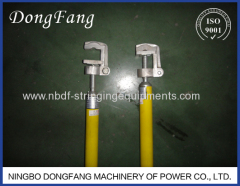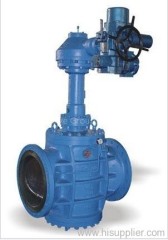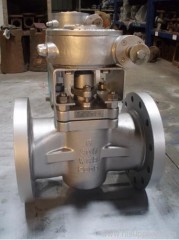
|
ZHEJIANG HUAXIA VALVE MANUFACTURING CO.,LTD
|
Twin seal plug valve
| Place of Origin: | , China (Mainland) |
|
|
|
| Add to My Favorites | |
| HiSupplier Escrow |
Product Detail
Our main products are Ball Valves, Gate Valves, Globe Valves, Check Valves, Butterfly Valves and Plug Valves.
The Twin Seal Valve is a non-Iubricated, resilient seal,plug-type valve which
has a mechanical means of freeing the plug before it is rotated from the closed to the open position,In opening the valve, the plug is raised,thus retracting the seating segments or slips through their tapered dovetail connections.Only after the slips afe
fully retracted perpendicularly from the body seat is the plug rotated to the open position.
has a mechanical means of freeing the plug before it is rotated from the closed to the open position,In opening the valve, the plug is raised,thus retracting the seating segments or slips through their tapered dovetail connections.Only after the slips afe
fully retracted perpendicularly from the body seat is the plug rotated to the open position.
Conversely,in closing the valve,the plug and slips are rotated freely,wigh no seal-to-body contact,until the slips are positioned over the ports. Then the plug is driven down between the slips and the tapered surfaces wedge oug the slips for a positive upstream as well As downstream shut-off.For maximun Upstream sealing,it is important to torque the valve closed do not back off. Do not use cheaters.
Thesmall Twin Seal Valves are handwheel operated,and require up to 3 turns to open or close.Up to 23/4 turns expand or retract the slips,while ?turn rotates the plug.Large valves operate in a similar manner ,except that they have enclosed weather-proof worm gearing.
At the top of the valve,a position indicator flag shows the exact plug position indicator flag shows the exact plug position.It appears in line with the flow when the valve is open,and perpendicular to the flow when the valve is closed.Where Twin Seal Valves are used for double block and bleed service,a manual body bleed valve is required to check seal integrity of the valve in the closed position.
Since Twin Seal valves hold bubble-tight.in liquid service,it is important to prevent trapped body pressure form exceeding the working pressure of the valve.Automatic bleed valve system or thermal relief systems are recommended to prevent pressure buid up in the body cavity.
Since Twin Seal valves hold bubble-tight.in liquid service,it is important to prevent trapped body pressure form exceeding the working pressure of the valve.Automatic bleed valve system or thermal relief systems are recommended to prevent pressure buid up in the body cavity.
Notes: The specifications can be designed and satisfied for customers' special
requirements
We have obtained Certificates of CE, API 6D, API 607, TS and ISO 9001
requirements
We have obtained Certificates of CE, API 6D, API 607, TS and ISO 9001






